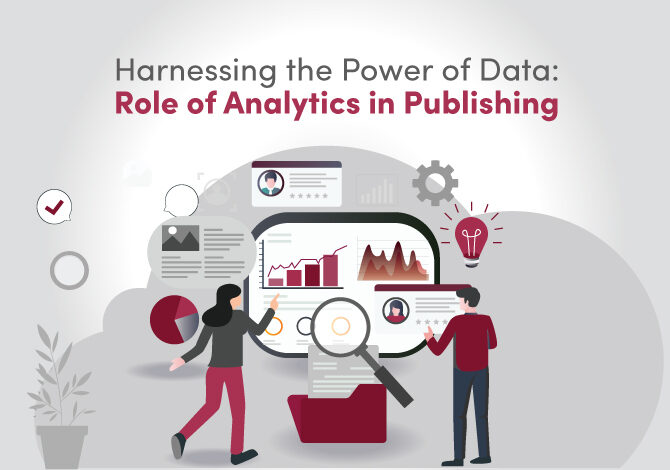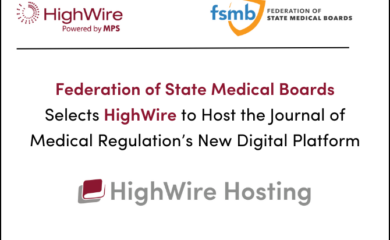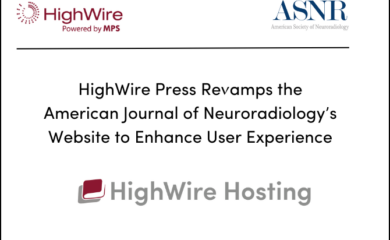The emergence of data analytics has provided a new direction for publishers, offering them a method grounded in evidence to navigate the complexities of the publishing process. This approach, centered around data, is being adopted universally, from large-scale publishing houses to small independent publishers. The goal is to enhance efficiency, deepen their understanding of their readers, and evaluate the impact and usage of their content. This isn’t merely a trend, but a significant shift that’s reshaping the publishing industry, transforming data into a crucial tool for decision-making and strategic planning.
The Rise of Data Analytics in Publishing
The rise of Publisher analytics in the scholarly publishing followed a transformative path. It began with the digital transformation, moving from print to online content, which enabled publishers to track user interactions. Standardization efforts like COUNTER facilitated consistent and comparable metrics, while the adoption of data analytics tools and AI enabled in-depth analysis of user behavior. Personalized content recommendations and alt metrics provided valuable insights, and open access further amplified content visibility. Analytics-driven decision-making became the norm, fostering collaboration and transparency among stakeholders. Publishers embraced a culture of continuous improvement, refining content strategies based on user insights, ultimately shaping a dynamic and data-driven scholarly publishing ecosystem.
The Power of Predictive Analytics
Predictive analytics is a branch of data analytics that uses historical data, statistical algorithms, and machine learning techniques to make predictions about future events or outcomes. Predictive analytics has revolutionized the scholarly publishing industry by empowering publishers with data-driven insights to enhance decision-making and strategic planning. By analyzing historical data and utilizing advanced algorithms, predictive modeling enables publishers to anticipate future readership patterns, content relevance, and audience engagement. This valuable information guides publishers in tailoring content offerings, optimizing marketing strategies, and prioritizing high-impact articles for increased visibility. As a result, publishers can align their publications with readers’ interests, improve content quality, and foster audience retention.
Predictive Analytics and Monetization
Predictive analytics empowers publishers to optimize monetization strategies by forecasting content demand and identifying potential revenue streams. By analyzing historical usage data and reader preferences, publishers can offer personalized subscription models, premium content bundles, and targeted advertising opportunities, ensuring that they deliver value to their audience while maximizing revenue generation. Additionally, predictive modeling aids in identifying high-value customers, enabling publishers to implement pricing strategies that align with readers’ willingness to pay, leading to enhanced profitability and sustainable growth.
Reader Behavior Analysis
In today’s digital era, comprehending reader behavior extends beyond merely identifying popular content. It involves a deep exploration of the subtleties of reader interactions with content, their consumption habits, and their sharing tendencies. Here, analytics plays a pivotal role, offering critical insights that can shape content strategies and boost engagement.
The New York Times, a trailblazer in the publishing world, has effectively employed data-driven tactics to augment digital subscriptions. By harnessing the power of data analytics, they gained insights into their readers’ behaviors, preferences, and patterns of engagement. This understanding enabled them to customize their content and marketing approaches to align with their readers’ needs, leading to a surge in subscriptions and enhanced reader loyalty.
In scholarly publishing, predictive analytics is used to analyze large datasets, such as citation data, subscription costs, and COUNTER reports, to gain insights into future trends. Armed with more data about their users than ever before, librarians and publishers can now track the utilization of specific articles from specific journals down to the individual user. This granular level of data allows for reasonably accurate forecasting for future use, thereby driving strategic decisions in the publishing process.
Take Elsevier, for example, which employs data analysis tools to pinpoint high-impact content for their journals. They initiate a preliminary search based on author keywords, restricting the search to papers published within the last four years to increase the likelihood of finding researchers still actively engaged in a particular field. The results can then be further refined as required, offering a comprehensive exploration of the data and a plethora of insights into reader behavior and preferences.
The escalating influence of predictive analytics techniques has led to the emergence of numerous tools facilitating these reports, with HighWire’s Impact Vizor standing out as industry leaders.
Streamlining Workflows with Analytics
The Peer Review Process: A Data-Driven Approach
Detecting Bottlenecks and Inefficiencies: The peer review process is central to scholarly publishing, ensuring the quality and credibility of research. Data analytics is being used to analyze historical data on submission and review timelines, identifying where delays and inefficiencies occur. Tools like Manubot are designed to streamline the submission and review process. This analysis helps publishers make targeted improvements, enhancing the overall efficiency of the process.
Ensuring Diversity and Equity: Scholarly publishers like Elsevier are leveraging analytics to promote diversity in authorship and the reviewer pool. By analyzing data related to gender, ethnicity, and geographical location, they are making conscious efforts to ensure diverse perspectives. This data-driven approach reflects the broader goal of inclusivity and equity in scholarly publishing.
Strategic Planning and Decision Making
Focusing on Scientific Importance: In scholarly publishing, insights derived from analytics guide decisions on what science and research are most important. By analyzing readership patterns, citation data, and collaboration networks, publishers can identify emerging fields, influential authors, and impactful research. This strategic alignment with scientific importance ensures that the most relevant and valuable research is highlighted.
For instance, using SN Insights, Springer Nature identified a growing trend at Cornell University towards open access in the domain of physics. This was further correlated with the department publishing in the Journal of High Energy Physics and funding acquired due to cooperation with CERN and other European partners.
This level of detail and dataset integration is unique to SN Insights, showing the impact Springer Nature publications are having on an institution’s research pipeline. By connecting wide-ranging data points, including impact metrics like usage statistics and downloads, SN Insights presents the data in aggregated lists, timelines, and heatmaps, removing the data silo problem.
Optimizing Content Delivery: Analytics also plays a role in optimizing content delivery to the academic community. By understanding how researchers access and interact with content, publishers can tailor their platforms and services to meet the specific needs of the scholarly community. This optimization enhances accessibility and engagement, furthering the dissemination of knowledge.
Solutions like HighWire’s Impact Vizor and Kitaboo offer insights and automation to enhance accessibility and engagement, furthering the dissemination of knowledge.
Improving Efficiency within the Publishing Process: Tools like Typefi and ContentPilot – Integra are being used to automate time-consuming elements of the publishing process, from typesetting to pagination. By analyzing data on various aspects of the publishing process, from manuscript submission to publication, publishers can identify areas of inefficiency and take steps to address them.
Understanding the Challenges and Limitations of Using Data in Publishing
Disruption Caused by Unauthorized Sharing Platforms
The emergence of unauthorized content-sharing platforms, such as Z-library and SciHub, has significantly impacted the publishing industry. These platforms offer free yet unlawful access to scholarly research and publications, circumventing conventional publishing by engaging in unauthorized distribution of copyrighted content. They host digital versions of books without the explicit consent of the authors or publishers, infringing upon copyright laws and intellectual property rights. This can hinder publishers’ ability to make data-driven decisions about which articles to publish and promote. It also impacts the precision of analytics data, which subsequently affects the accurate measurement of the true impact of academic research publications.
Rise of Artificial Intelligence (AI)
The integration of artificial intelligence (AI) into data analysis introduces new opportunities and challenges. AI’s ability to process vast amounts of data, recognize patterns, and generate insights has the potential to revolutionize how publishers analyze and utilize information. AI can enhance data processing, uncover hidden patterns, and provide deeper insights. However, it also requires rigorous oversight to prevent algorithmic biases, ensure transparent decision-making, and maintain ethical data usage.
Balancing Analytics and Data Privacy
The collection and analysis of reader data to depict usage and engagement can raise privacy concerns, especially if personal details are also extracted. Publishers need to strike a balance between leveraging analytics and ensuring data privacy. They can do this by implementing robust data privacy policies and practices, ensuring that personal data is anonymized before analysis, and being transparent with users about how their data is being used.
Addressing Biases, Misinterpretations, and Limitations in Data
Data collected within academic research can be biased or misinterpreted if not examined rigorously. For example, data on citations and downloads may not accurately convey the impact of research but rather the popularity of the author or journal. The growth of analytics in academic research may create an overreliance on metrics, potentially shifting the focus to trending topics and authors rather than original, relevant, and impactful research.
Currently, there are few standard methodolgies for collecting and reporting analytical data within academic research, outside of COUNTER reports, which focus on institutional usage of content. This lack of standardization leaves room for misinterpretation, fabrication, and biased numbers. To address these challenges, there is a need for standardization in data collection and reporting in academic research. This can be achieved by developing and implementing standardized data collection and reporting protocols, promoting transparency in data collection and analysis processes, and encouraging rigorous peer review of data and methodologies.
Conclusion – The Future of Publishing is Data-Driven
The integration of data analytics into scholarly publishing is not merely about efficiency; it’s about enhancing the very essence of academic research. It’s about making decisions that resonate with the scientific community, promoting inclusivity, and highlighting valuable research. The future of scholarly publishing is being shaped by those who recognize the potential of analytics to enrich not just the workflow but the integrity and impact of academic research.
HighWire Press exemplifies this insight-driven approach with tools like Impact Vizor. Designed specifically for journal editorial teams, Impact Vizor provides real-time, granular insights into the impact and citations of scholarly content. It allows publishers to spot early indicators, track rejected articles, and analyze relationships between metrics. Unlike generic data platforms, Impact Vizor offers consolidated, intuitive visualizations that show the performance of content at a granular level, enabling publishers to make evidence-based editorial decisions.
The adoption of such advanced analytics tools is a testament to the industry’s recognition of data as a valuable asset. It signifies a shift towards a more proactive and predictive approach to decision-making. Publishers are no longer just reacting to trends; they are anticipating them and strategizing accordingly.



